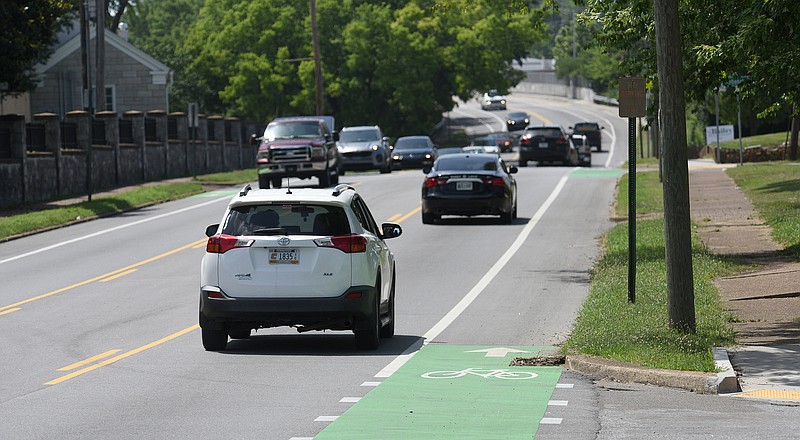We often wonder why governments and divisions of government don't seem to talk to each other. Or if they do, no one seems to be listening.
In recent weeks, we've been thinking specifically of the Tennessee Department of Transportation. How is it that someone thought having up to four adjacent projects on area interstate highways at the same time would be a good idea, would be ideal for local commuters or welcoming for visitors?
For instance, drivers north of the river on U.S. Highway 27 South could encounter ongoing roadwork at the highway's split with I-24, roadwork on I-24 East as they approach the split with I-75, roadwork on the I-75 North bridge over the CSX railroad tracks as they approach the East Brainerd Road exit, and — starting in January (at last report) — confront roadwork surrounding the I-75 North exits at Hamilton Place Boulevard and Shallowford Road.
If we're really lucky, none of those projects will be completed before the start of the widening of I-24 around Lookout Mountain, which has tentatively been scheduled to start in 2024.
What this has done has slowed and stopped traffic on the interstates during almost all daylight hours of every weekday, worsening air pollution and delaying commute times — the exact opposite of why interstate highways were created.
But what it also does is clog inner city commuter routes with local drivers who formerly used the interstates to come into and go from downtown. Doubt us? Check out 5 p.m. traffic heading into the McCallie Tunnel (which now can resemble the pre-interstate commutes on the route), on East Brainerd Road as it approaches I-75, on Amnicola Highway or on Shallowford Road as it approaches Airport Road.
As far as these projects go, it's water under the bridge to complain about them, and we'll all be delighted with the interstates once the work is done, but we hope TDOT planners will in the future plan to finish one project before starting another within a relatively small geographic area.
Which brings us to the city's most recent bike lane project, which plans to narrow crowded Central Avenue from four lanes to three between East Third Street and East Main Street to allow a path for the rare bicyclist.
In 2021, then-Chattanooga mayoral candidate Tim Kelly and his runoff opponent Kim White had a few good laughs when a questioner asked about bike lanes at a Hixson forum at Stuart Heights Baptist Church. White said "there will be a big parade when we take up the bike lanes on Broad [Street]," while Kelly opined that bike lanes "were a noble experiment," then mentioned how the bike lanes in his Fort Wood neighborhood afford about a cyclist a month.
A Kelly administration, he emphasized, would "rethink the [transportation] grid."
However, under his administration, the unpopular bike lanes only have increased. And to say they're still little used would be an understatement.
Unfortunately even when they're available, they're often not used. In recent weeks, we have seen 1) a cyclist use the turn lane on Market Street for his path instead of the available bike lane, and 2) a cyclist in the bike lane on the Bailey Avenue bridge veer unannounced into the traffic lane, then cut left around construction on Central Avenue where cars at the time were not permitted.
The Chattanooga Mayor Andy Berke-era goal of narrowed streets and bike lanes was said to be the aim of what is known as "complete streets," which involve — according to a city website — "right-sizing a road" by "repurposing road travel lanes from car-only travel to other uses such as bicycle lanes or on-street parking. Right-sizing happens on streets that are deemed to be inefficiently and unsafely oversized. Oversized streets tend to create many negative impacts, such as cars traveling at excessive, dangerous speeds."
"Inefficiently and unsafely oversized," of course, is in the eye of the government bureaucrat and not necessarily the commuter who wants to get home safely but efficiently and cause less air pollution by not having to stop as often.
We lost count at the pandemic how much had been spent on bike lanes in the city since the Berke administration, but it was a minimum of $1.5 million. We suspect it is much, much more.
Bicycling is wonderful exercise, and we would recommend it for anyone either for pleasure or for going to and from work. But Kelly was right when he said the bike lanes had been "a noble experiment." Now, when traffic on inner city streets has picked up because of all the interstate work, more streets are narrowing and more bike lanes are being added. As we mentioned at the outset, someone's not talking to someone.
